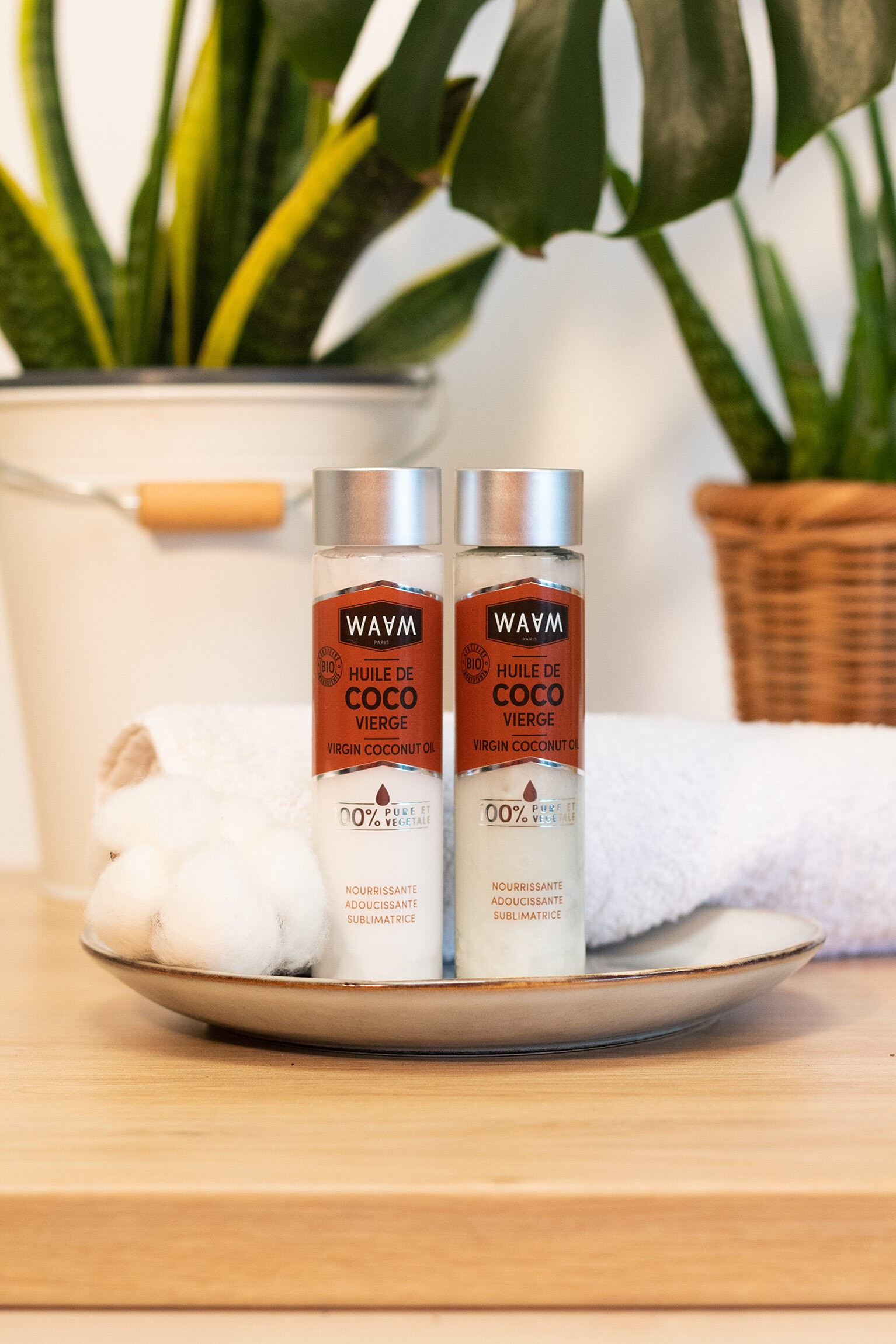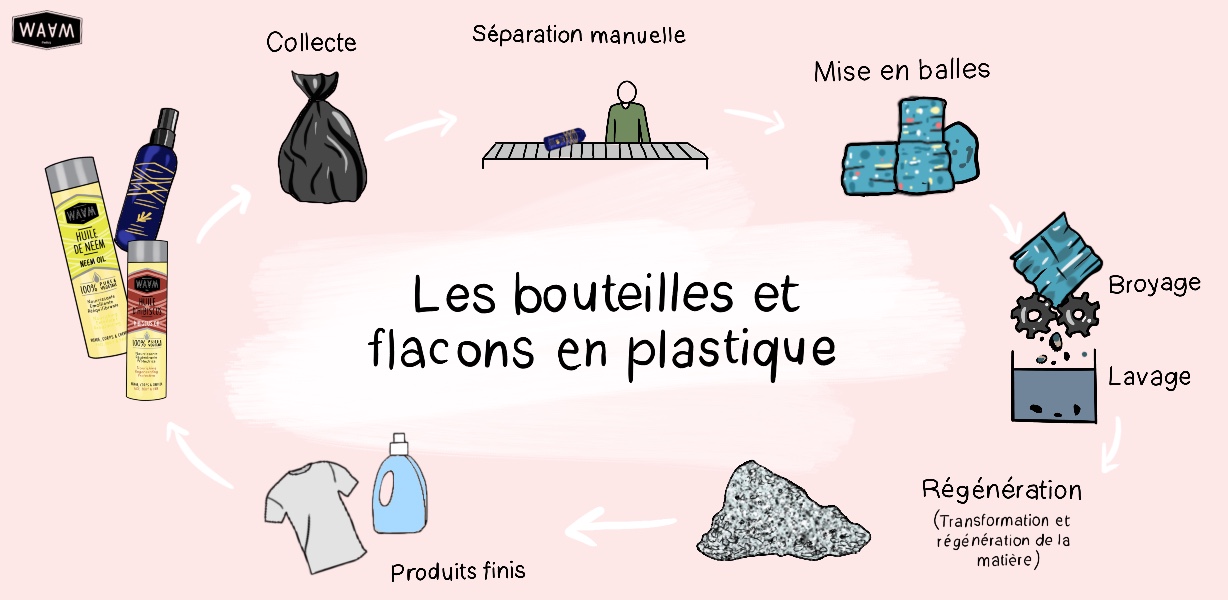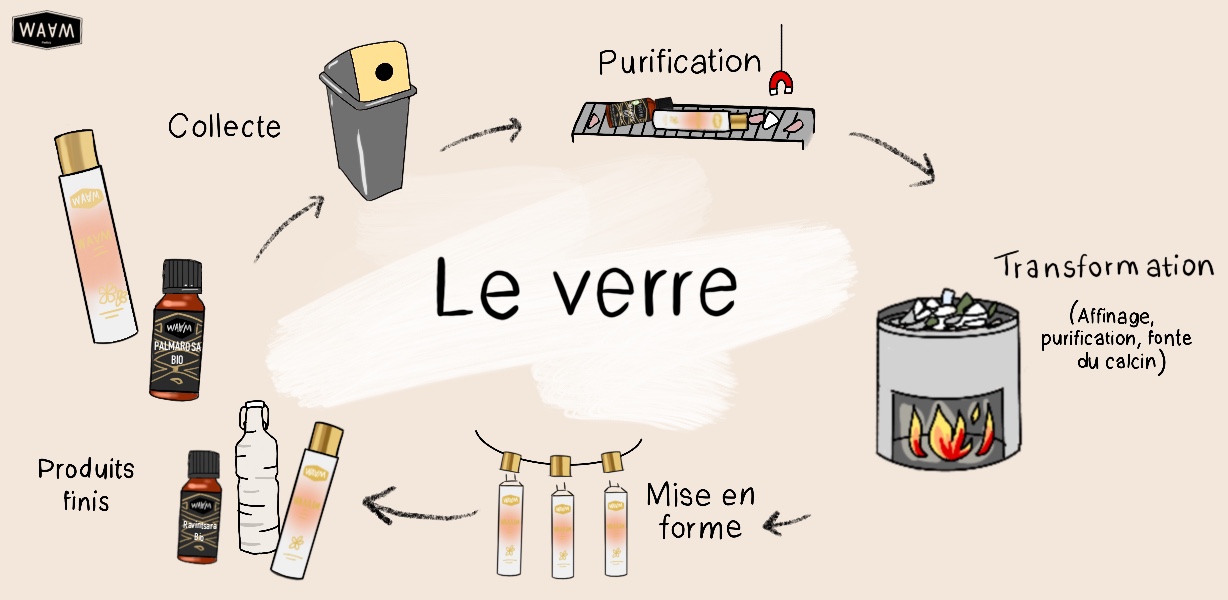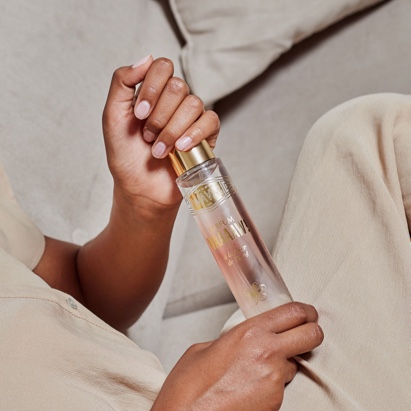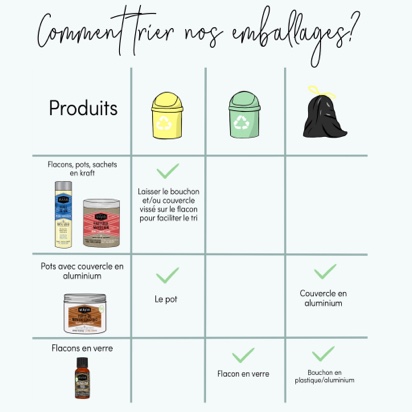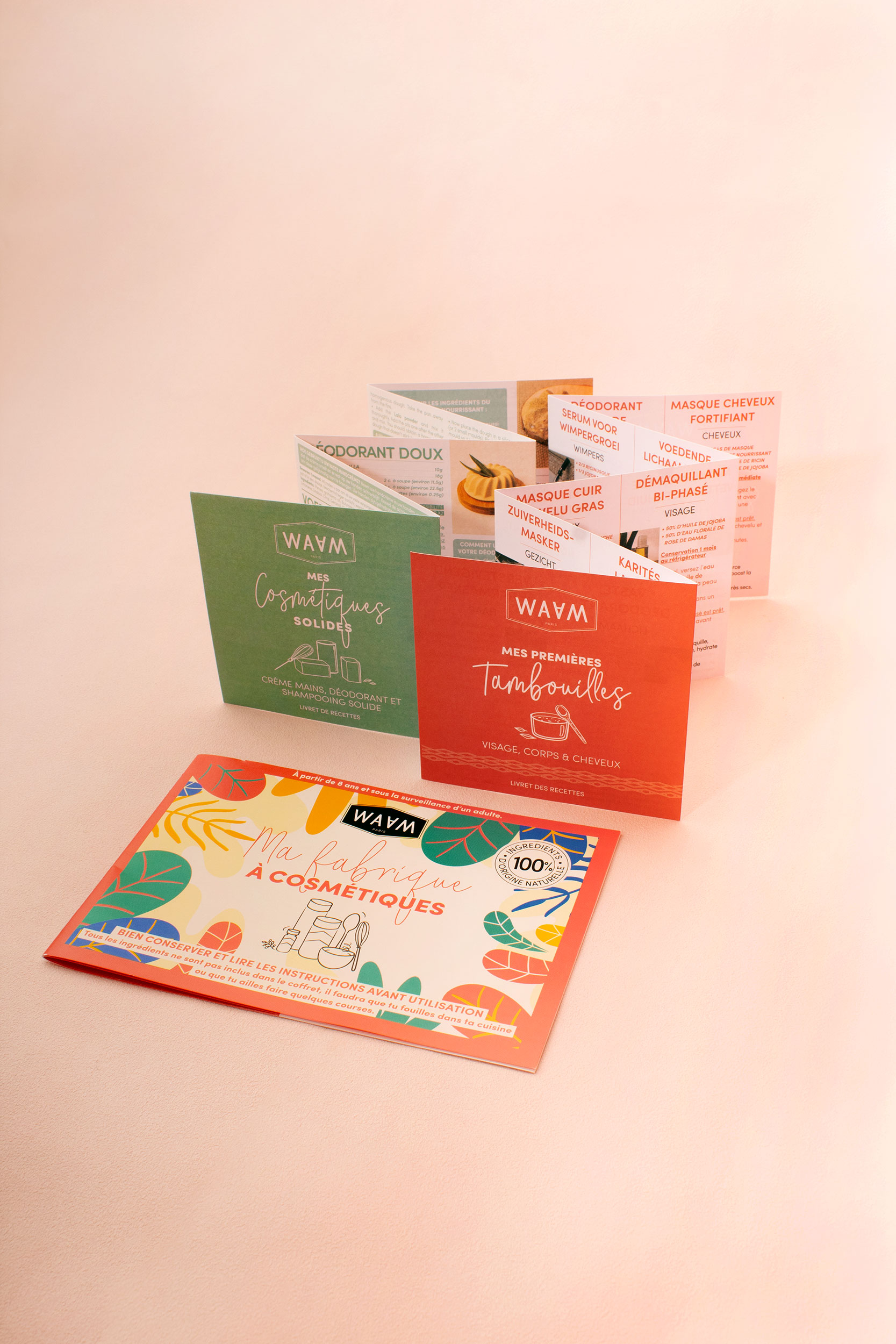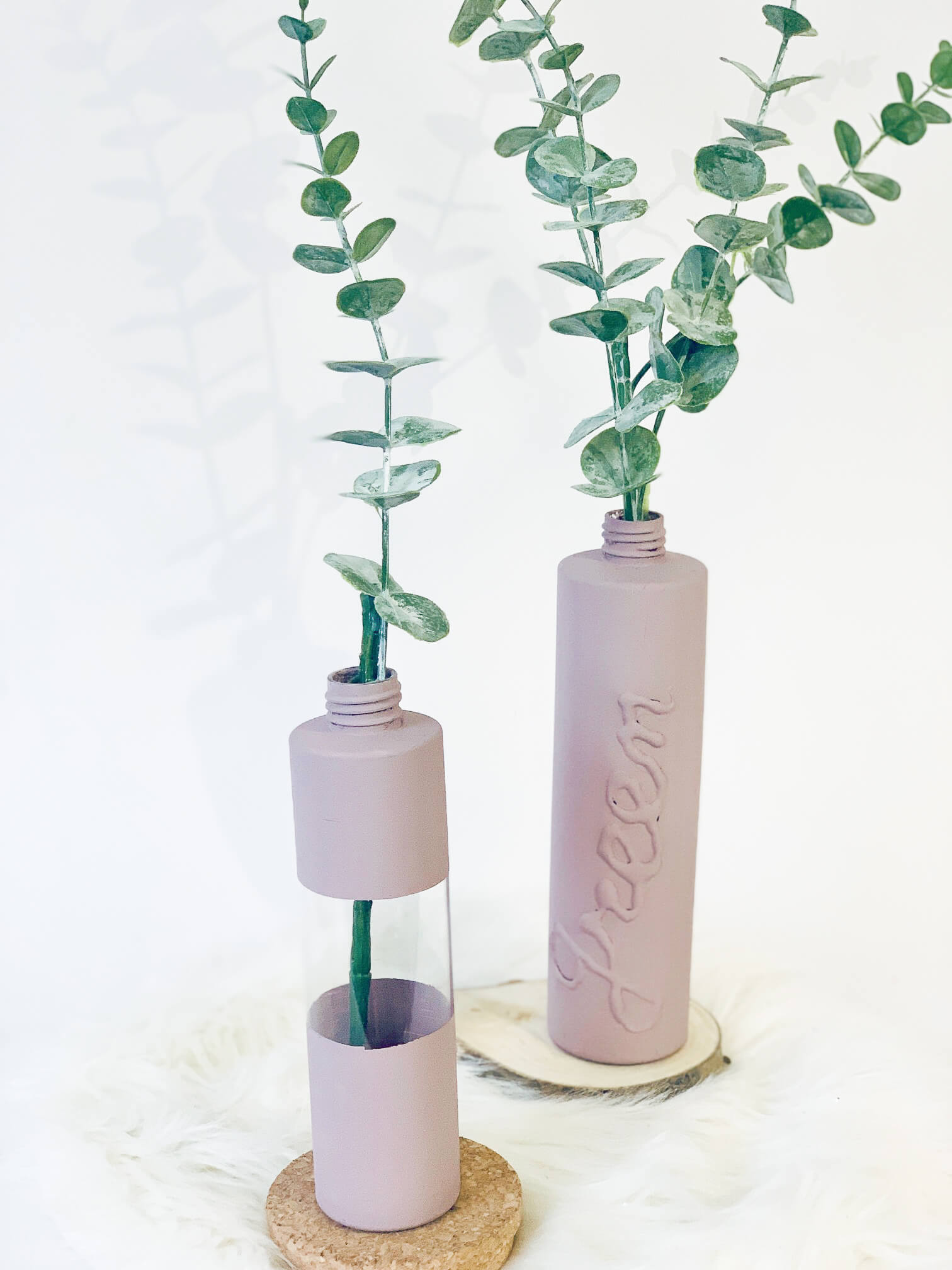Our packaging
"The choice of plastic is a conscious one"
At present, most of our bottles and jars are made from 100% recyclable PET and 100% recycled and recyclable RPET, food-grade and made in France, to guarantee optimum preservation of your products. They all come from Europe to minimize our carbon footprint. The use of 100% recyclable PET gives our packaging a second life after recycling.
We are gradually moving on to RPET 100% recycled and 100% recyclable for our products.
We worked for several months with our French supplier, who didn't yet offer our packaging in this material, to develop these new bottles, which we wanted to be truly 100% recycled, not just a compromise between PET and RPET.
The first products concerned are our neutral bases and vegetable oils. We're doing everything we can to reach our goal of 100% recycled plastic packaging.
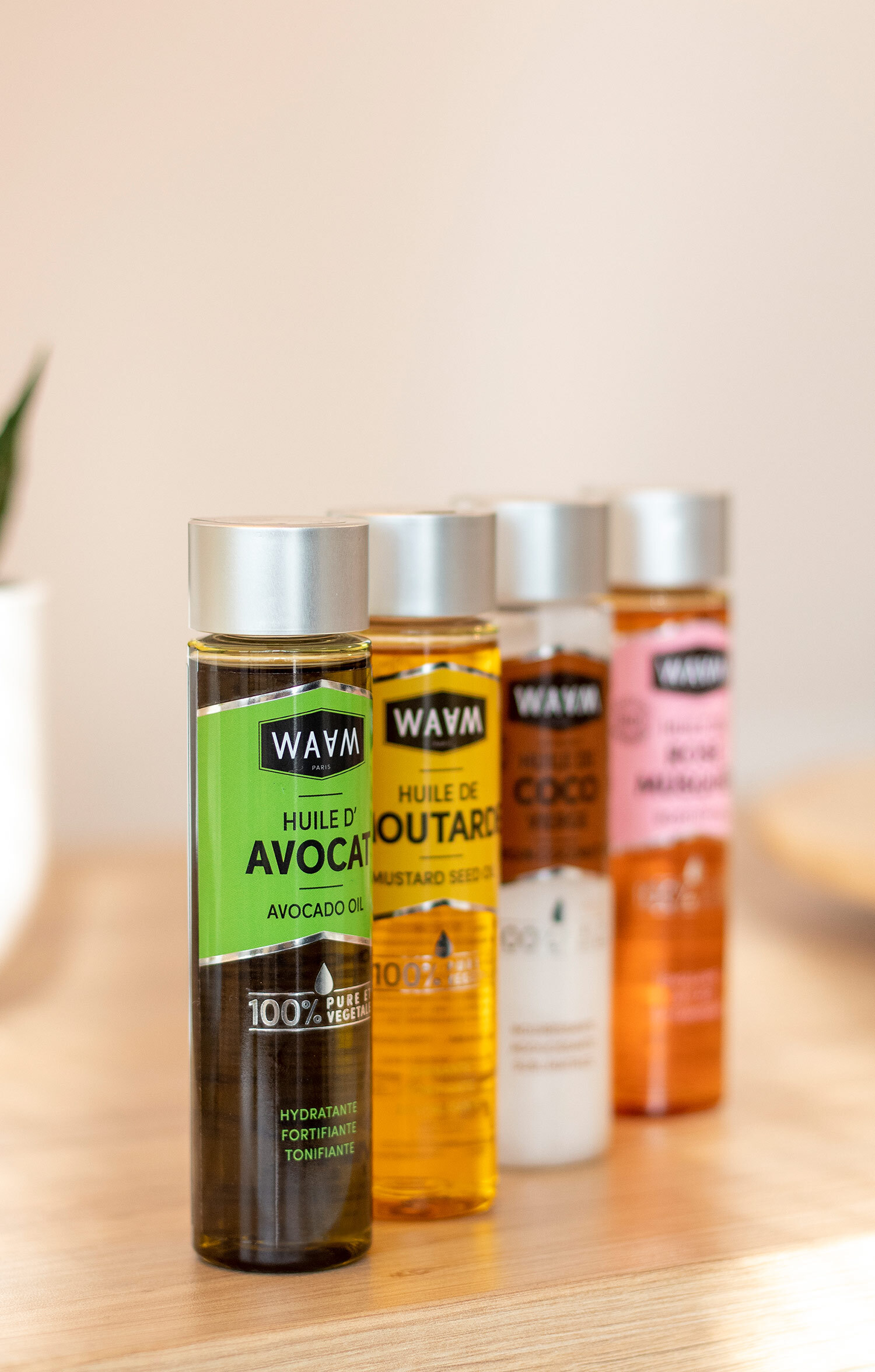
.jpg)
.jpg)





